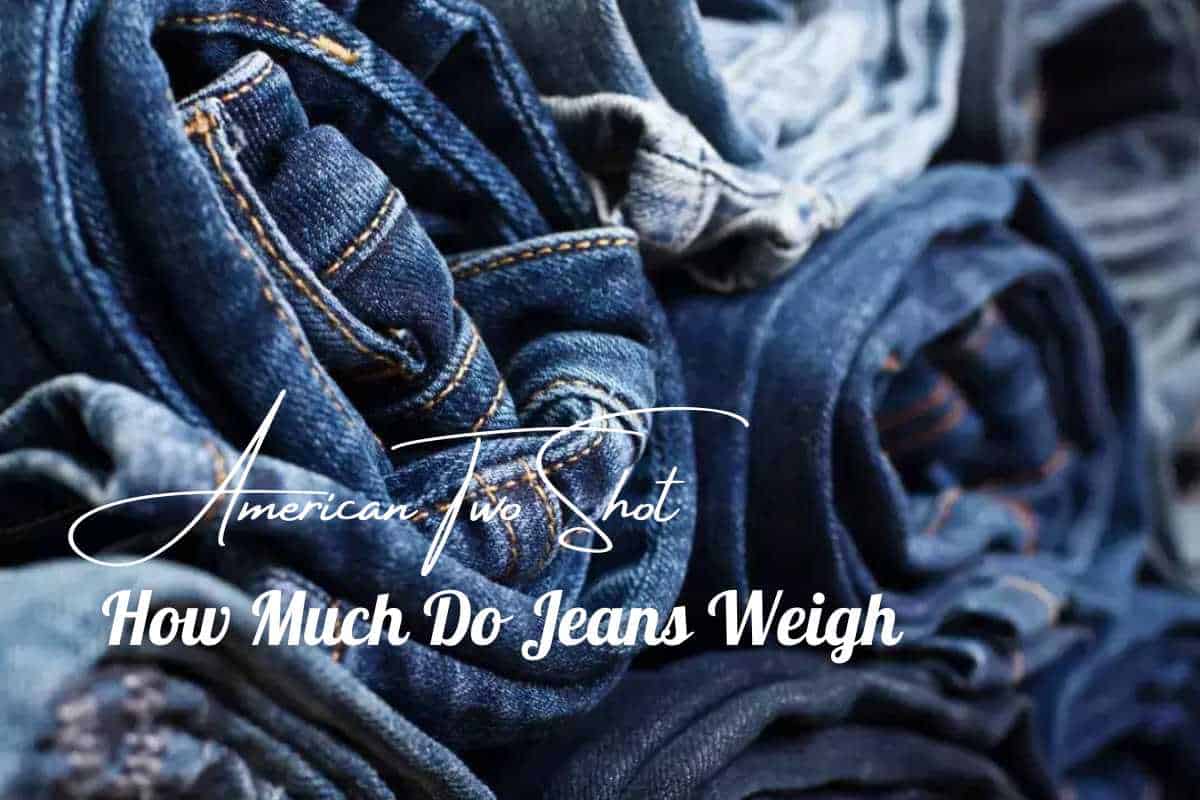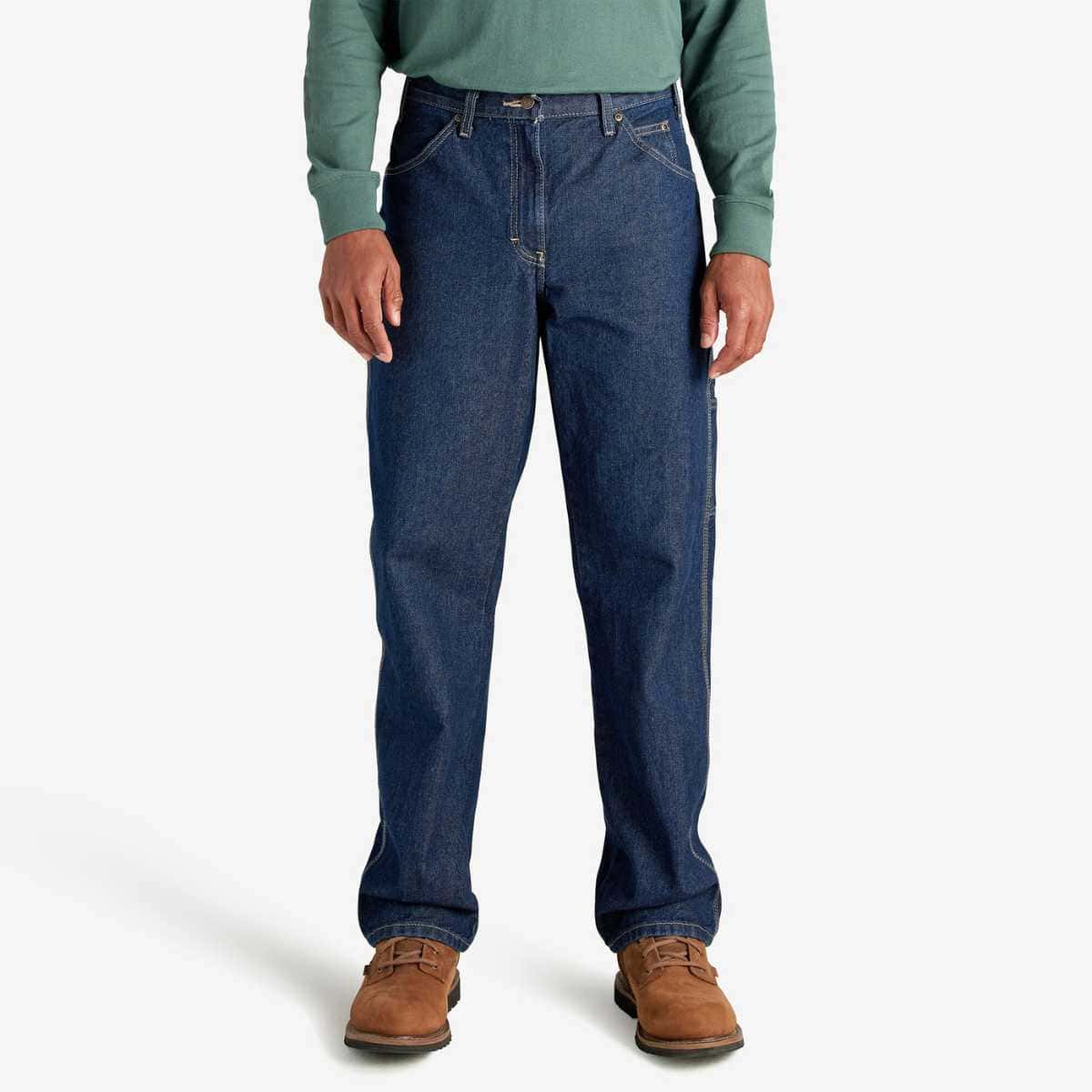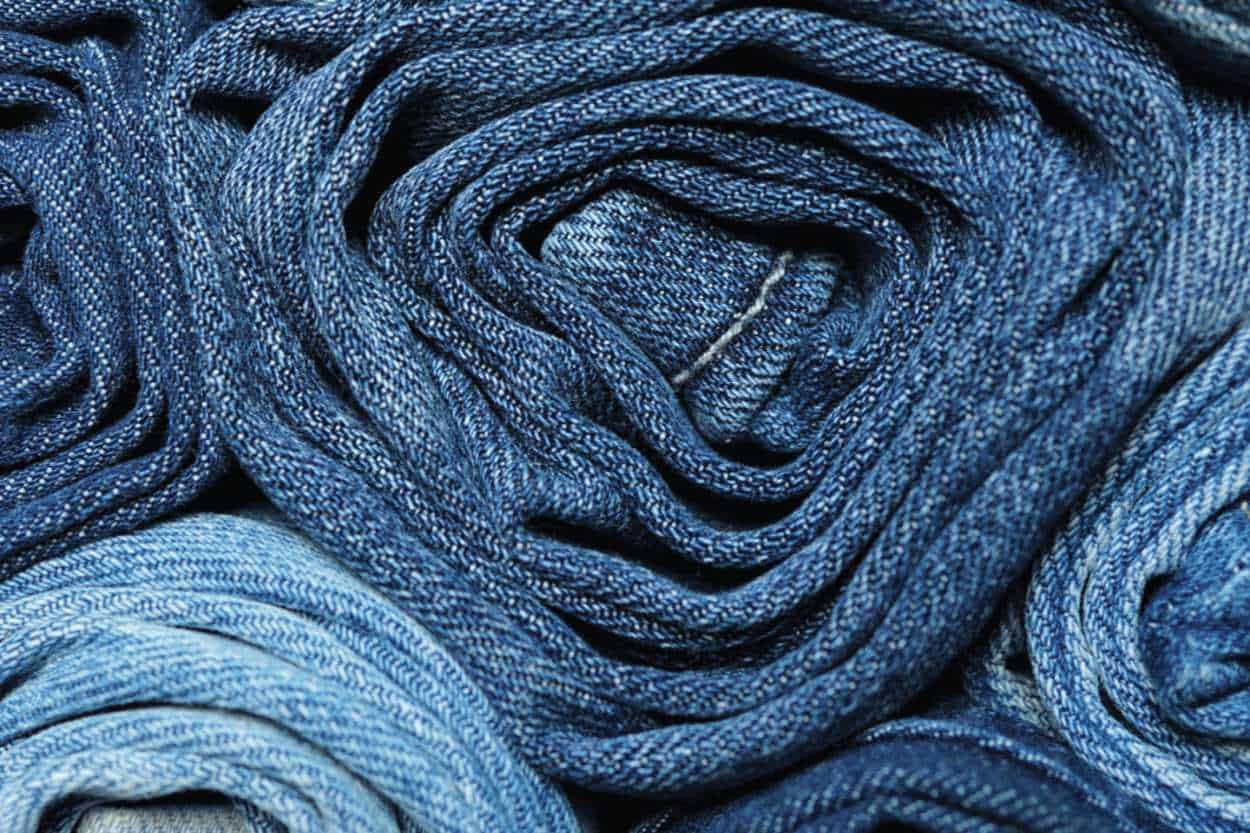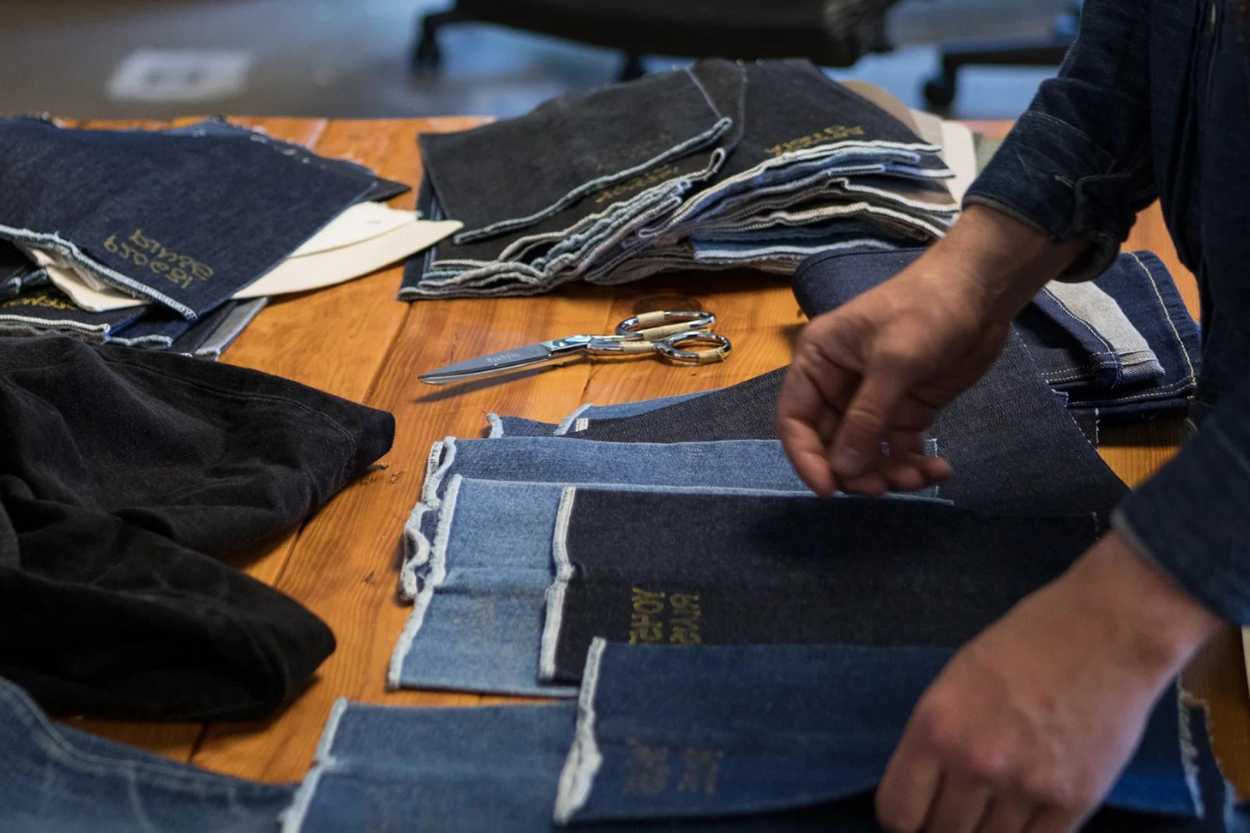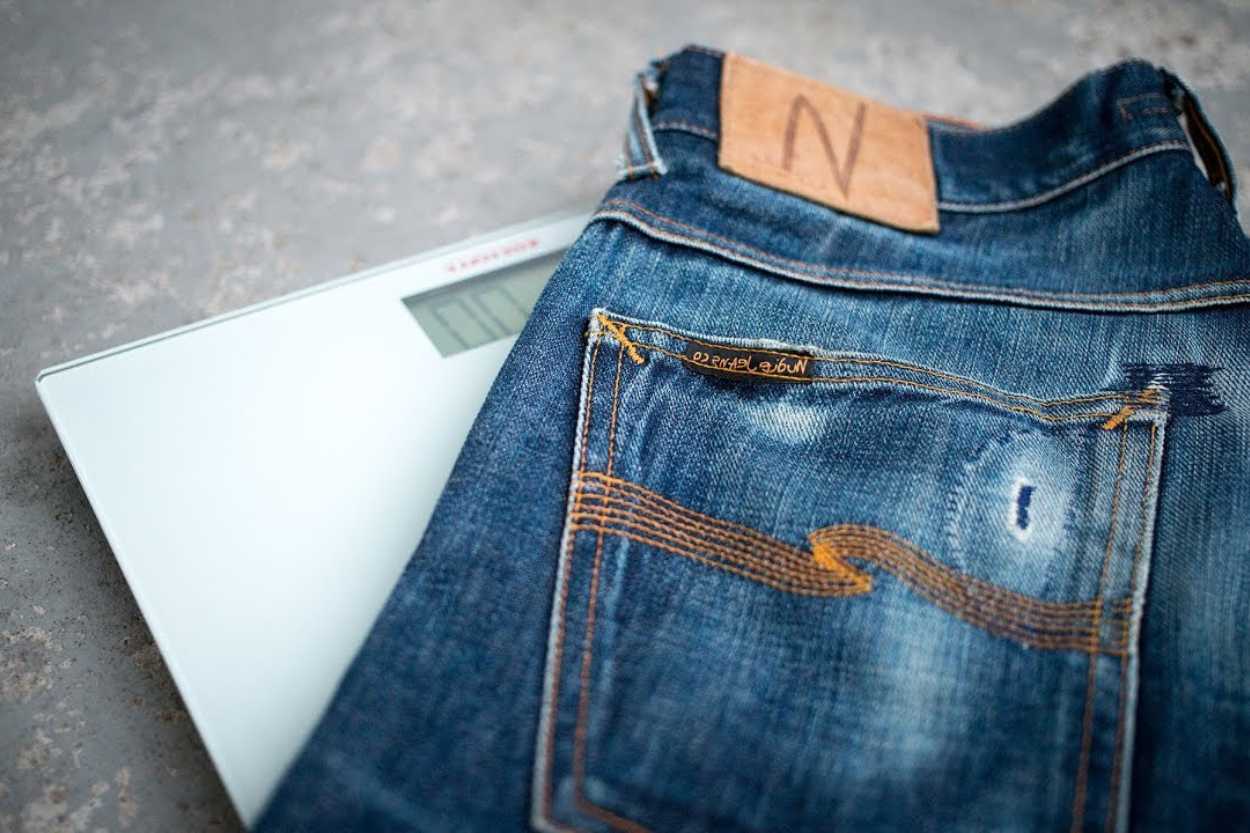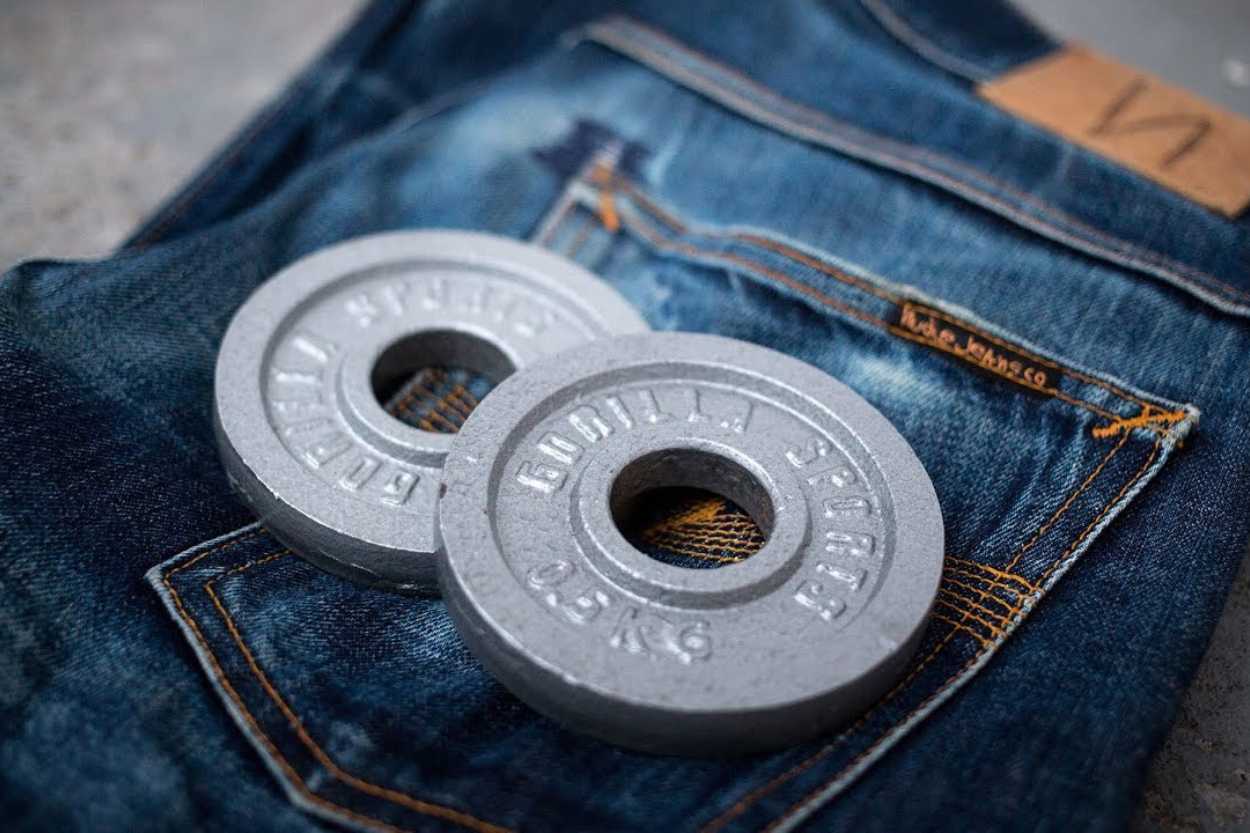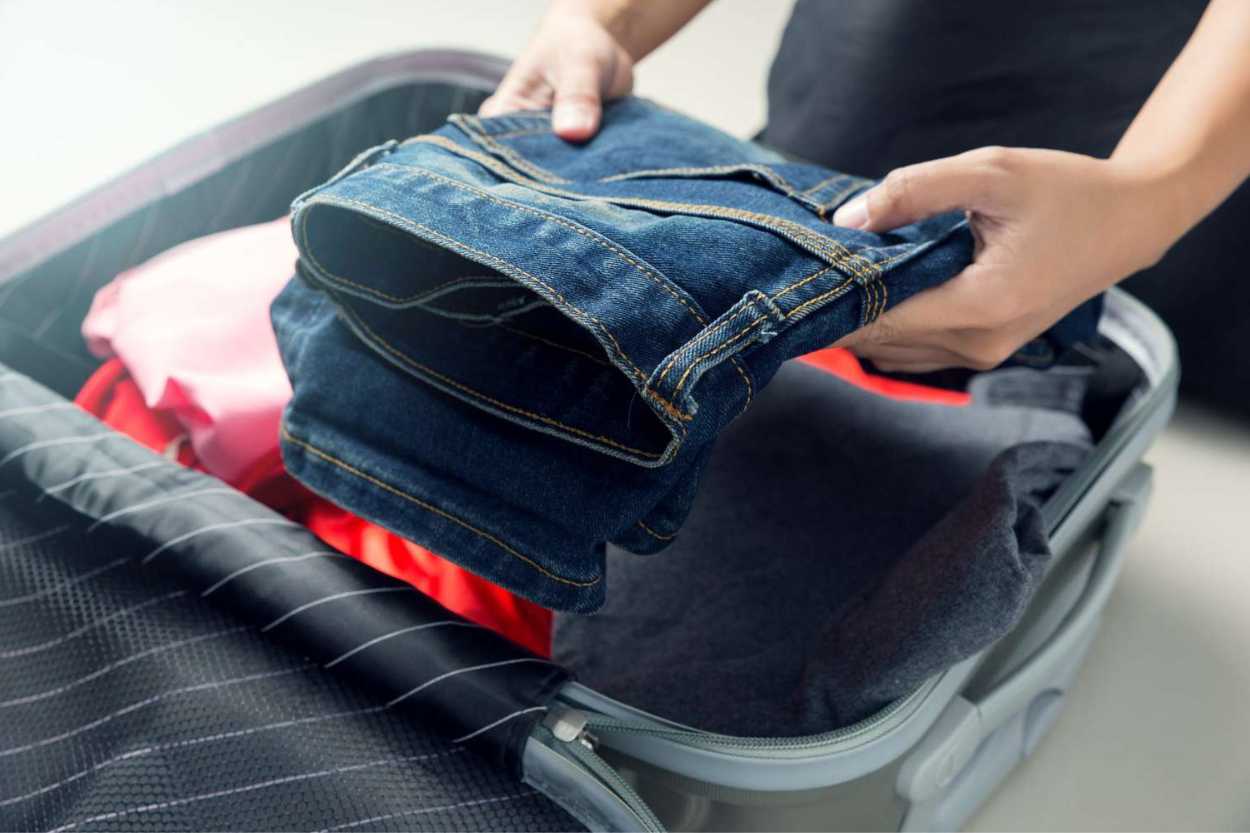Manufacturers produce jeans with different weights, depending on their functionalities. This means that your jeans’ weight often differs from the weight of the denim used to make them.
Denim jeans have three weights- lightweight, midweight, and heavyweight jeans. Lightweight jeans are often between 5 to 12 oz, midweight jeans are 12 to 16 oz, while heavyweight jeans are generally considered 16 oz and above.
How Much Do Jeans Weigh? Three Weights to Consider
As mentioned, three weights are vital when weighing jeans – lightweight, midweight, and heavyweight. Remember that denim fabrics are measured by ounces per square yard.
Lightweight
Lightweight jeans are often between 5 to 12 oz. Manufacturers use this fabric for warmer weather because they are soft, comfortable, and breathable. They can even be stretched for more comfort and flexibility. The downside is that they don’t last very long, or at least, as long as their counterparts.
Midweight
Midweight jeans are often between 12 to 16 ounces. They are balanced and can be worn at any time of the year. They are stiffer than lightweight jeans but softer than heavyweight jeans. If you want jeans for casual or semi-formal occasions, this is your go-to.
Heavyweight
Heavyweight jeans are often 16 ounces and higher. Brands and manufacturers produce heavyweight jeans for harsh climatic conditions. They are super thick and dense, thus providing additional warmth.
In most cases, they are also very thick, so wearers have to put them on for a long time so they can mold and fit their bodies perfectly.
Factors that Affect Jeans Weight
What factors can drastically influence jeans’ weight?
Fiber
Jeans’ weight depends on the thickness of the yarn used to make the fabric, the yarn’s weight, and even how tightly the yarn is woven. Every fabric has a peculiar weight, so even if you blend two fabrics, it will give an entirely different result.
Now, if the jeans are made with one fabric type, say cotton, the yarn weight can still influence it. The style of weaving the yarn also influences the weight, because if woven and packed too tightly, slightly increases the weight.
Fabric Processing
Another factor that influences jeans’ weight is fabric processing. The techniques used to process jeans can sometimes reduce their weight. For instance, raw, unprocessed jeans will naturally feel stiffer and stronger than processed ones.
Once the jeans have been softened with ozone treatments, prewashed, or even blended with other fabric types, the weight can be reduced. Some manufacturers prefer to produce jeans made from raw denim so that the wearer’s body can shape it over time.
Style and its Relation to Jeans Weight
This factor is evident; the fabric plays a significant role in determining jeans’ style. Lightweight jeans are best for skinny jeans, or high-waisted or wide-legged jeans because they are flexible and easy to mold. Midweight jeans are best for moderate-sized, straight-cut jeans.
Heavyweight jeans are best for baggy fits; it’s almost impossible to achieve a skinny cut on such a thick fabric and move comfortably.
Variations in Jeans Cut and Sizes
Different jeans have varying cuts and sizes. As mentioned, not every jeans’ weight is suitable for every size. For instance, we have various types of jean cuts, like bell-bottoms, wide-legs, low-rise, high-rise, skinny, and tapered jeans.
You can’t use heavyweight jeans for most cuts because it’s inflexible. You need midweight or lightweight jeans to accommodate whatever fashion style you have.
Also, note that no universal jeans weight standard exists for all brands to adhere to. If you’re looking at jeans (or the denim used to make them), different brands have their standards. When buying jeans from one brand, no matter how popular they are, they probably won’t weigh the same as another.
Here’s a tabular overview of popular brand weights we’ve carefully researched. Note that this table doesn’t cover every single pair of jeans these brands have. It only gives you an idea of the types of jeans these brands produce.
If you want a specific weight, go to the store and check the labels or do your research.
| Brand | Men’s Jeans | Women’s Jeans | |
| Lightweight | Toad and Co. | Around 10 oz | Not given |
| 34 Heritage | Around 8.5 – 9 oz | Around 7.5 – 8 oz | |
| Lee | 10 – 11 oz | Same | |
| Midweight | Matt & Bow | 11.5 – 12.5 oz | Around 10.5 – 11.5 |
| Levi’s | Mostly around 12 oz | Mostly around 11 oz | |
| Wrangler | Most around 14 oz | 12.5 – 14 oz | |
| Patagonia | 12.5 – 13.8 oz | Not given | |
| Heavyweight | Outerknown | 14.5 to 19.5 oz | Same |
| The Unbranded Brand | Around 18.5 oz | Same | |
| Iron Heart | Around 19 oz | 17 – 19 oz | |
| Naked and Famous | 15.5 – 19 oz | Not given |
How to Weigh Jeans
Now that you know that the weight label on 12 oz jeans isn’t necessarily their actual weight, you need to know how to weigh jeans to get an accurate measurement. You can’t depend on what the manufacturers tell you, because they only weigh the denim or fabric used, not the finished product.
Here’s what you can do:
Kitchen Scales
The best tool for weighing jeans is the kitchen scale. It’s very handy, and depending on the scale it uses, you can measure either in pounds (lb) or grams (g).
First, roll your jeans neatly and take out your scales. Ensure your scales can fit or accommodate your jeans size. Set your scales to zero and place your jeans on the scales. Record your results.
Bathroom Scales
Your bathroom scales can work. However, they don’t have varying measurement options or are as accurate as kitchen scales. Ensure that whatever scale you use can comfortably weigh your jeans, and set it to zero.
Don’t attempt to do the same thing on bathroom scales as you did on kitchen scales. You won’t get a tangible result if you roll your jeans and place them on the scales. The jeans might be too light for the bathroom scale to register an accurate weight.
Here’s a step-by-step guide on what to do instead:
- Take out your bathroom scales. Ensure it’s set to zero
- Wear nothing except your light underwear and stand on the scales. Record the measurement.
- Then, wear your jeans and stand on the scales and record.
- Subtract both and you will find the weight of the jeans.
Tips for Accurate Jean Weighing using Common Household Items
Here are some tips to remember when weighing jeans
The Measurement Surface Must Be Flat
Ensure that whatever you place your scale on is flat for accuracy and stability. Placing your scale on an uneven surface will result in inconsistent measurement.
Always Set to Zero
Some people don’t think this tip is a big deal, but it is. Whenever you weigh your jeans, always set the scale to zero so that it doesn’t account for additional measurement. If you don’t, you will have to subtract whatever it was set to from the final measurement.
Stand Still During the Process
Always stand still whenever you weigh jeans, as any movement can result in inaccurate measurements.
Even Weight Distribution
This point is closely tied to the last. If you want accurate results when weighing your jeans, ensure that you distribute your weight evenly. What does this mean?
Stand on your feet at the scale’s center and keep your body aligned. Any movement can fluctuate the jeans’ weight.
What Are the Practical Implications of Knowing Jean Weight?
Now you know how to weigh jeans, how does it impact your daily life?
Traveling with Jeans
Most people don’t know their actual jeans’ weight, so they’re shocked when they get to the airport and pay for extra baggage. They judge by their jeans’ label and wonder why it incurs extra cost. Some people don’t even think their jeans can affect their overall luggage weight. That’s wrong.
If you have a pair of jeans that weighs over 16 ounces, you could pay extra because planes have baggage limits, so you must prepare yourself.
E-commerce and Shipping
If you’re an e-commerce vendor doing business with public marketplaces like Facebook, Amazon, and Etsy, you must know how much jeans weigh because that can impact your sales and shipping price.
If you sell jeans, in that case, you must know their weight and estimated shipping cost plus packaging so that you can decipher the right price to sell them at. If not, you’ll run at a loss.
Environmental Factors
Consider Climate When Choosing Jeans Weight. For instance, if you live in typically hot and steamy regions, you have no business with heavyweight jeans.
But if you live in cold regions, heavyweight jeans can protect you from harsh climatic conditions. Wearing lightweight jeans in such places might not be ideal, except if you’re partaking in an activity that requires flexibility.
Frequently Asked Questions
Here are some questions people commonly ask:
What is the Average Weight of Jeans?
Most brands and manufacturers typically produce jeans between 10 – 13 ounces. They only manufacture in other sizes when targeting a specific demographic.
Are Stretched Jeans Heavier than Non-stretched Jeans?
In most cases, the weight difference isn’t so much. It depends on the fiber or fabric used to make it.
Final Words
Has this article answered your question, ‘How much do jeans weigh?’
When I walk into a store to buy jeans, I know what to look out for. Remember, never claim that you know the weight of the jeans just by the manufacturer’s label because it can mislead you.
After weighing the jeans yourself, always identify whether they are lightweight, midweight, or heavyweight. You can weigh your jeans anytime by practicing the steps I’ve outlined and you’ll be.

Jessica Oliver is a fashion enthusiast with more than ten years of experience in the industry. She previously managed her own clothing store in New York before becoming a mother of three. With a passion for sustainability and a desire to share clothing care and recycling tips.

